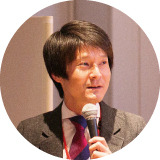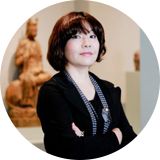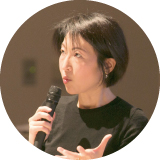Special Screening+Talk Show
Identity Issues in Singapore and Malaysia Seen through Films Talk show(3/3)


We are touching upon a lot of interesting topics, but I’d like to move the discussion from Singapore to Malaysia. Malaysia and Singapore, both which used to be under British rule, once declared unification, but later developed as two separate countries. Present-day Malaysia’s ethnic composition and methods of economic development differ from those of Singapore, but, Mr. Takiguchi, what distinguishing characteristics do you think there are in terms of culture?
Singapore is a country founded on the principle that each ethnic group is equal. Malaysia, on the other hand, clearly stipulates the special position of Bumiputras [Malays and indigenous ethnic groups] in its constitution. This, I would say, is the biggest difference between the two countries. As for culture, Malaysia has the National Culture Policy, enacted in 1973, which clearly states that the national culture must be based on the indigenous culture, i.e. Malay culture. This National Culture Policy has continued to exist as the only official cultural policy in Malaysia, and there have been no amendments to it since. In a sense, other than those of Malay-descent, ethnic groups in Malaysia must always be aware of Malay culture and the Malay people, who represent the majority, while forming their own identities. I think this is the most important characteristic.
Mr. Yoneda and Ms. Kataoka, how do you see Malaysian artists from the perspective of identity, having conducted your research in Malaysia?
Just like Singapore, I got the impression that Malaysia has many works of art and artists who revisit identity on various levels. For example, one of the artists we plan to exhibit is Yee I-Lann (1971 – ). Born to a Malaysian father who is ethnically of Chinese- and Kadazan-descent, and a mother from New Zealand, she was educated in Australia and developed her artworks focusing on photographs. For example, this Malaysiana Series (2002) is a work that continuously exhibits a variety of people, all who take photographs at a particular photo studio, who were gathered and grouped into different ethnicities, age, class, gender, or race. Many of her works express hybridity or diversity. Another work of hers is titled Fluid World (2010). She created this work inspired by the indigenous ethnic groups who once lived around waterways. It is made with batik dye, and you can interpret many different things from it. For example, you can see issues surrounding femininity and gender from the fact that batik was the work of female craftsmen. And, there is also the motif of “water.” Yee I-Lann’s home state of Sabah, on the island of Borneo, has very distinct rainy and dry seasons, and there are some towns where houses become flooded when the rainfall is especially heavy. Water damage has become such a problem in these towns that they are becoming depopulated. As shown in the title of the work, “Fluid”, this work suggests how culture can be fluid, and how things are fundamentally subject to constant flow.
In addition, there is a group named Pangrok Sulap from a generation younger than Yee I-Lann. This group is also from Sabah, and they live in a town just inland from the state capital of Kota Kinabalu. We were told that from Sabah, the Malaysian peninsula appears to be at the center even though Sabah is very much a part of Malaysia. That is, despite the fact that Sabah and Sarawak joined Malaysia in 1963, the people strongly feel that their existence have been forgotten, and that there is a hierarchy between them and the mainlanders. Pangrok Sulap have created a work titled MA=FIL=IND (2015). In 1963, there was a plan called “Maphilindo” to consider Malaysia, the Philippines, and Indonesia as a single country. Although this plan was not realized, these [artist-]curators from the younger generation posed a question to artists of their own generation: “What would have happened if Maphilindo had been realized?”
Finally, I would like to discuss SEPET, which we will screen after this talk. Yasmin Ahmad, the director of SEPET, was born in 1958 but passed away suddenly in 2009 at the age of fifty-one, leaving us with five feature films. Ms. Matsushita served as an interpreter when Yasmin’s film was screened at the Tokyo International Film Festival, and I have heard that Mr. Takiguchi was a close friend of the director when he lived in Malaysia and Singapore. Could you please tell us what her position was in the history of Malaysian film, and what kind of impact she left?
Although she also made the debut feature RABUN in 2002, SEPET gained a lot of attention as one of her early works. In one scene of SEPET, there is a line that goes, “Malaysia once had a golden age of cinema, but what about now?” Indeed, Malaysian cinema was stagnant for many years. I think that you could say that under such circumstances, Yasmin created a trend that triggered the world to pay attention to Malaysian film. She had already made unique and outstanding works as the artistic director of an advertising agency, so that may have made it easier for her to make her debut as a film director. Without any commercial backing, she gained all this attention, and that made it easier for other people to follow her. Malay is the official language of Malaysia, and films made in other languages are given the cold shoulder, being treated as foreign films and even incurring extra taxes, or never making it to an actual premiere. It’s not as though Yasmin overcame such a state, but you could say that she created a sense of solidarity regardless of race, and opened the gates for people who have not graduated from film schools, even Chinese and Indians, to make films too.
Mr. Takiguchi prepared some images of a Malaysian performing arts work. While introducing this, could you please talk about what Yasmin was aiming for and how she is regarded in Malaysia where Malay-, Chinese-, and Indian-Malaysians have created a society where they hardly interact with each other?
First, the images I have prepared are from a performance titled Break-ing 撃破 Ka Si Pe Cah which also toured to Japan and staged at Setagaya Public Theatre after its premier in Malaysia. In Malaysia, because of the language barriers, it is not very common to create plays that go beyond ethnic groups. This work, however, was made as a sort of intercultural collaboration by actors who perform in Malay, Chinese, and English. What’s happening in this scene is an experiment in which young Chinese actors perform the exact same actions and lines as Between Two Classes (Antara Dua Dariat, 1960), a film directed by P. Ramlee (1929–1973) who was active during the golden age of Malaysian film. Of course, they all learned Malay in schools, and thus are fluent in the language. But this very interesting experiment shows that, even while they converse naturally in Malay, the remnants of their Chinese physicality awkwardly seeps through from within their bodies. Such instances show that there are some things that are very difficult or impossible to overcome or even reconcile. I think this is the same in both Malaysia and Singapore, but when your everyday life is in a country where so many cultures and languages exist, you can never really assume that everything, 100 percent of what you think or communicate will get across to the other person. Everyone is very well-aware of that limit, and various people in the world of theater, film, and visual arts are experimenting and trying to figure out how to live together, how to get along as a single country. I think that Yasmin’s series of works relentlessly question how people with diverse cultures could live side by side.
Our time has gone by so quickly. Even during the “SUNSHOWER” exhibition, we are hoping for visitors to enjoy the exhibition itself at both venues, and also the related lectures and seminars focused on the cultures, societies, and livelihoods of each country and region in Southeast Asia. In closing, Ms. Kataoka, could you give us a taste of what we can look forward to in the exhibition?
As I mentioned in the beginning, the “SUNSHOWER” exhibition is the largest exhibit ever to introduce the contemporary art of Southeast Asia. In this exhibition, artists and works from all ten ASEAN countries are introduced. While the exhibit spans from the 1980s to the present day, we hope to not only introduce the newest and youngest generations, but also encourage visitors to think about how concerns have shifted due to generational changes, and what sort of social, economic, and historical transformations can be read through these works from the 1980s to the present day. In that sense, I think this exhibition will have many elements that are worth figuring out for the visitors. We often tend to look at “Southeast Asia” or “ASEAN” as a single entity. But circumstances vary in each country, and I think it is important to understand those differences. Moreover, I think visitors will be able to strongly feel the cultural ties among Asian regions, including Japan, and I hope to make this an exhibition present that kind of perspective; a perspective that shows how each of the differing circumstances are in fact connected to the region as a whole.
Thank you very much. That brings an end to this talk. Thank you to the speakers and to you all for joining us today.

Photo: Seiya Kawamoto




